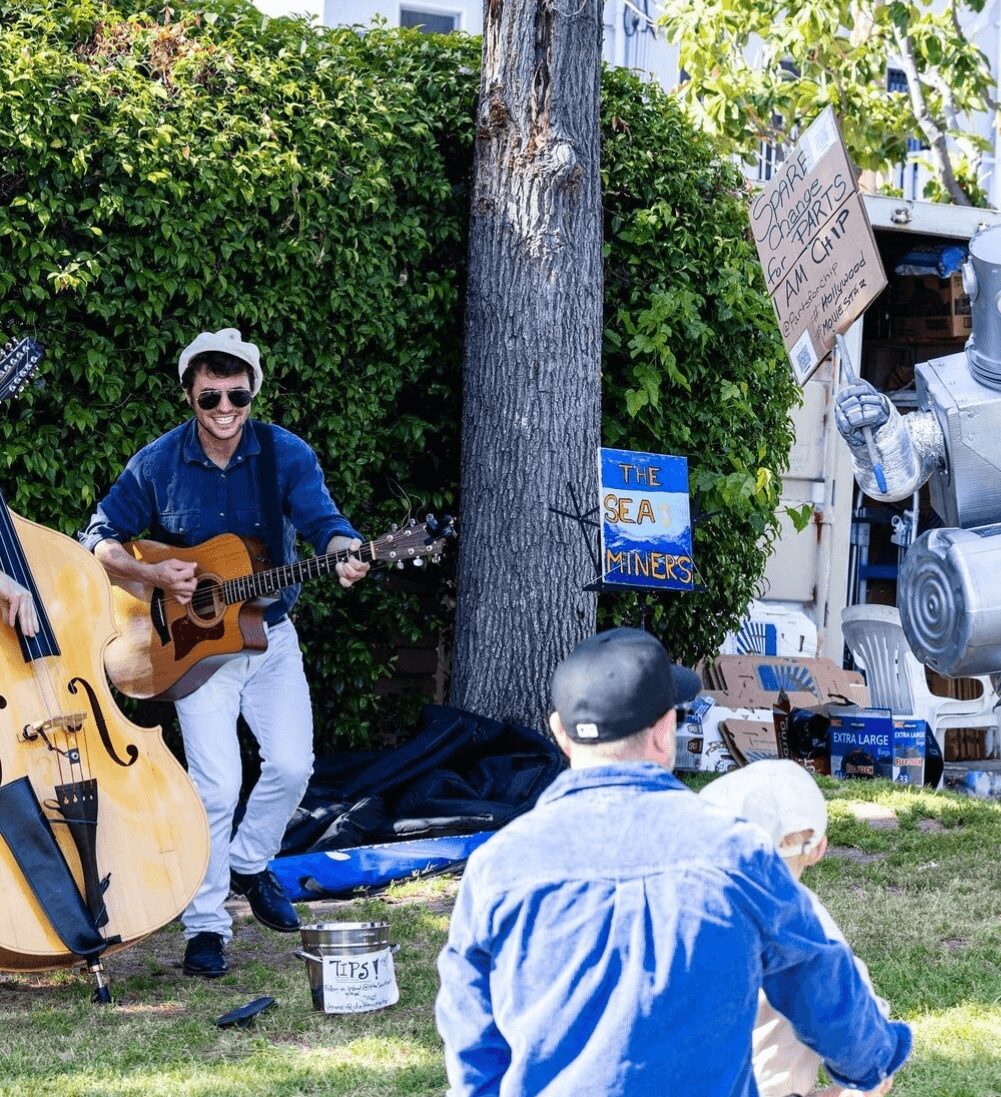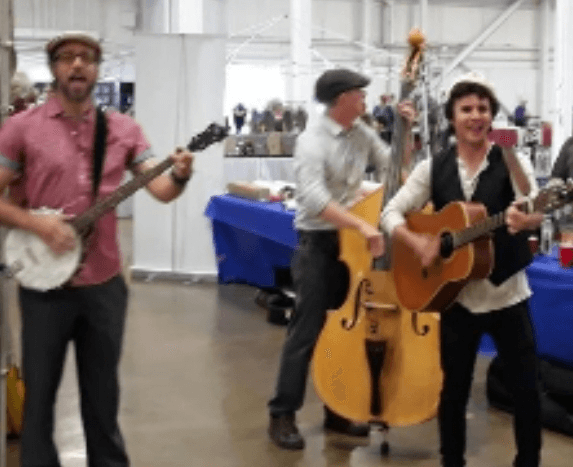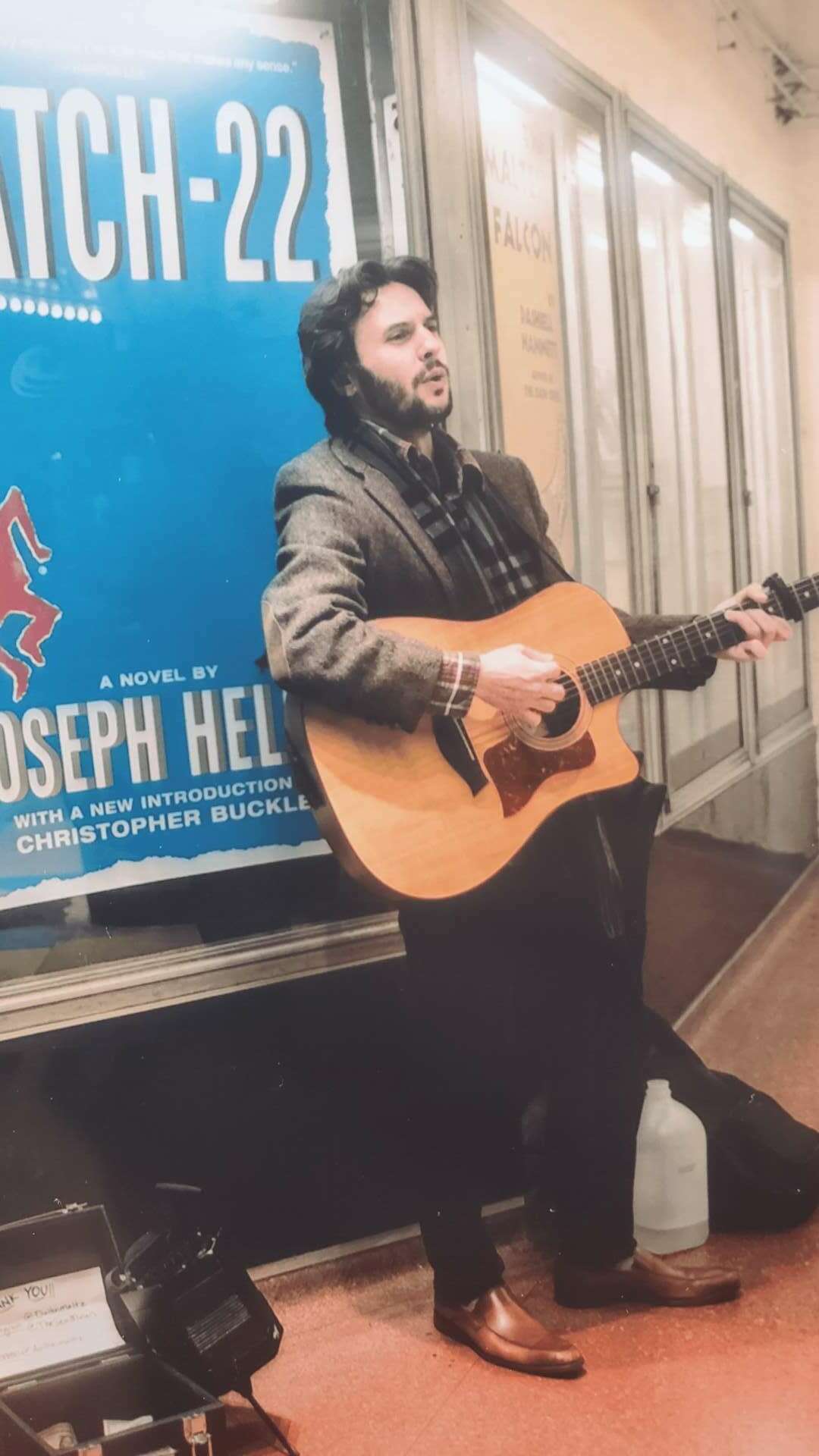We caught up with the brilliant and insightful Dalton Maltz a few weeks ago and have shared our conversation below.
Dalton, thanks for taking the time to share your stories with us today Can you talk to us about a project that’s meant a lot to you?
When I was 20 years old, I used to drive around in my car blasting a home-burned CD of my favorite Irish folk tunes. I’d been recently turned on to the genre by a friend of mine and couldn’t believe how much I enjoyed it. It had some of the “greatest hits,” including Luke Kelly’s rousing rendition of “Whiskey In the Jar” with The Dubliners and not one, but two version of the iconic rebel song “Rising of the Moon.” The first was a jaunty sing-a-long by The Irish Rovers, but the second was the somber, minimalist treatment sung by Tom Clancy of The Clancy Brothers and Tommy Makem. I would belt along to Tommy Clancy on my way down the 101 back from working as a carnie at Universal Studios after my shift ended late at night. When I got back to college that fall, my friends and I started an impromptu Irish folk band with the scant few songs I could remember all the words to (that had singable choruses).
After graduation, I played with a few bands here and there, or wherever a mandolin would fit in musically. There was a lot of country, western, and bluegrass, but occasionally I would be allowed to lead “Dirty Old Town” as a feature in the set – aside from that, there was little appreciation for the Irish style I wore on my sleeve. That was until I met the venerable Ken O’Malley, perhaps Los Angeles’ greatest native-born Irish ballad singer, at one of his performances at the Sagebrush Cantina in Calabasas. We got to talking, and he mentioned that he was looking for someone to play the lead in a stage musical tribute to The Clancy Brothers and Tommy Makem, and I could be a perfect fit for the role. I strummed a couple of my favorites for him, he sent me the songbook, and I knew I had to be a part of the project at all costs. That’s how I ended up with my first paid acting work – portraying Liam Clancy, one of my all-time folk music heroes, singing the songs he sang in his own style, including “Rising of the Moon” – which the cast was instructed to learn off of the very same recording that I had burned onto my CD all those years earlier.
We performed several shows at the Wren Theater (located at the now-closed Irish Import Shop in Hollywood) in 2022-2023 and are looking to set up tour dates for the Northeast, where love for the genre is particularly alive. From singing along with the recording in my car to leading a sing-a-long of a theater full of people, I could not believe how directly my passion for the material had manifested into an opportunity to share it with the public!

As always, we appreciate you sharing your insights and we’ve got a few more questions for you, but before we get to all of that can you take a minute to introduce yourself and give our readers some of your back background and context?
My name is Dalton Maltz, and I am a Los Angeles-born singer and actor specializing in the Celtic folk music tradition along with my band THE SEA MINERS.
The Sea Miners are composed of myself on guitar and lead vocals, Tim LaLonde on the upright bass, and Joel Mankey on the octave mandolin, tenor banjo, or tin whistle. And of course we all sing as much as possible! Every few months, I have to produce a new long, raggedy list (somehow, they always become raggedy after about two weeks of use) of some 150 Irish, Canadian, Scottish, and American folk songs we’ve accumulated over the last few years, and I’m always seeking to learn more. We initially got our start at the Studio City Farmer’s Market, where we would draw large crowds of excited kids who would gaze in amazement at our bouncy, lively act with these big, shiny toys (the maple-toned upright bass is a real eye-catcher). Songs like “Finnegan’s Wake,” “Wild Colonial Boy,” and “The Mermaid” are simple, frequently funny stories that kids easily connect with, featuring clear heroes (usually some sharp-witted rogue), villains (usually some stuffy lawman), and struggles to be overcome (usually some run-in with aforementioned lawman, or occasionally a maritime disaster).
Our music also connects deeply with the senior demographic, given the age and history of the material, and my own eagerness to discuss the background and meaning of the material. We are one of the few fully acoustic bands in the area that performs these pieces so closely to the style in which they were written. Some of the most memorable moments for me as a performer are when an older patron will wait patiently for a song’s conclusion, only to approach and inform us that the song we just played was their father’s favorite song, and they haven’t heard it in 30 years. Those are the moments I feel I’m making a difference in someone’s day, or week – or life, if I choose to look at it ambitiously.
To those ends, we play quite a lot of children’s birthdays (every parent at the farmer’s market loves to tell us that their kid is our number 1 fan – I choose to believe them all!) and senior living centers. Knowing we’re making a positive impact for these communities is extremely rewarding, but we would be playing regardless, somewhere, simply because it’s fun, and we love what we play. I believe that’s one of the things that sets us apart from so many other bands; people often remark at how clear it is how much fun we’re having, and that’s infectious. If you’re up there enjoying yourself, and making it clear that you’re enjoying yourself, you’re setting the tone for the entire audience, and making it that much more likely that they too will relax and enjoy themselves.
As for myself, I’ll be playing music on street corners as long as there are people walking by and new songs for me to learn and share. You never know what’s going to happen when you take your art outside and share it with your community.

What can society do to ensure an environment that’s helpful to artists and creatives?
Art is an investment. Many establishments don’t see it that way. To them, if you can bring people in the door, if you can increase food and alcohol sales, then, you’re worthwhile, but otherwise, you have no value, and you’re simply taking up space – an unnecessary extra piece of an already lucrative puzzle. But art is an investment, and the returns can be impossible to overstate. There are a few locations in Los Angeles that seem to understand the importance of live entertainment, especially in a post-pandemic world. Every Sunday at The Auld Fella restaurant in Brentwood, I perform with a traditional Irish arrangement, featuring some world-class fiddle. When it first opened last summer, business was slow. We’d sometimes play through dinner for a very light crowd. But art is an investment! At The Auld Fella, local bands are performing nearly every night of the week. People began to turn out. And now, this restaurant that I’ve grown a deep fondness for (not just for the on-point interior decor, featuring high-hung portraits of Irish music legends all over the walls, but also for the wonderfully hip and friendly wait & bar staff) seems to have found a regular crowd. I will beckon to people walking outside through the tall glass windows, as we are playing, to get them to come inside and engage with the community. It’s something we all sorely need right now, and in my opinion, more venues can be willing to budget even a small amount for live, local entertainment, which is so crucial to rebuilding a sense of community that may have been disrupted by the pandemic. Because, ultimately, the entire point of any sort of art at all is to engage with community.

Looking back, are there any resources you wish you knew about earlier in your creative journey?
I wish I had taken a music theory course early on in high school or college. The difference one introductory course can make – it’s like giving someone who loves to eat a fork and knife for the first time. Maybe that’s a bad analogy. But beyond that, I always go back to something I heard my dad say when I was younger that stuck in my brain permanently, the way dad-isms have a way of doing. “It’s the power of showing up.” That’s what I think about every time I’m considering going to an unfamiliar jam, or seeking out people to play with who are way above my skill level, or heck, even just choosing whether to go out on the street and play the latest songs I’ve picked up for whoever is walking by. I’ve met some incredible people just doing that, who have connected me with other incredible people. My band today exists, and provides meaningful engagement with the communities we play for, because I showed up to the farmer’s market one seemingly random morning. I get to live a dream of portraying one of my greatest musical heroes onstage, just because I showed up one day and got to talking with Ken O’Malley. I really can’t emphasize enough how much “the power of showing up” has proven the key to moving forward in my artistic life.
Contact Info:
- Instagram: @daltonmaltz, @theseaminers
- Youtube: @theseaminers






